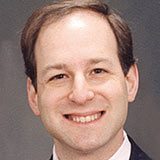For many income-oriented investors, the idea of investing in high-yield bond funds is too scary to contemplate. After all, during the heat of the credit crisis in 2008, the typical such fund lost about 26%, recalls Mark Salzinger, editor of No-Load Fund Investor.
However, at current rates of interest, funds that invest in higher-quality, investment-grade debt simply provide an unattractive package: insufficient income combined with substantial vulnerability to rising interest rates.
Higher quality high-yield bond funds are a somewhat attractive middle ground. They offer higher yields than investment-grade US bond funds, but more stability in the face of economic downturns and reductions in risk tolerance than the rest of the high-yield market.
One such fund is Fidelity Focused High Income (US:FHIFX), which yields about 4.2%. Though it's up less than the average high-yield bond fund over the past five years, it was a lot better than average in 2008, when it lost five percentage points less than the overall high-yield market.
Also, compared to investment-grade bond funds, it has produced excellent long-term returns: 9.2% annually over the five-year period ended September 30, 2013, versus 5.4% for the Barclays Aggregate Bond Index.
The fund has been managed by Matthew Conti since 2004. The word “Focused” in its name refers to an emphasis on the highest credit rating within the high-yield area: BB.
As of July 31, 2013, BB-rated bonds accounted for more than 68% of assets; B-rated bonds accounted for another quarter.
For the sake of comparison, note that the equivalent breakdown for Fidelity's flagship high-yield product, Fidelity High Income (US:SPHIX), was 26.5% BB, 52.5% B, and 12% CCC and below.
Focused High Income recently included more than 200 bonds, spread across 20 different industries. The weighted average maturity of the holdings was 4.6 years, which is intermediate. The expense ratio is 0.81%, which is fairly low for a high-yield bond fund.
Another such product is an exchange traded fund: PowerShares Fundamental High Yield Corporate Bond Portfolio (PHB). It yields about 4.5%.
Traditional high-yield bond-index products weight their constituents by the dollar value of their high-yield debt.
The greater the value of the debt, the heavier the weighting. Because the amount of debt is inversely related to credit quality, the conventional weighting scheme can result in a low-quality portfolio.
Instead, PHB is weighted by the fundamental size of each company that issues high-yield bonds. Instead of debt load, the weighting scheme incorporates such factors as asset values, sales, dividends, and cash flows.
The result is a higher-quality portfolio within the high-yield market. BB-rated bonds account for 57% of assets, while B-rated ones get 28%. In fact, bonds rated BBB—the lowest investment-grade rating—even account for 15%.
PHB recently included about 220 holdings spread among all the sectors of the US economy. The weighted average maturity was 6.25 years, suggesting slightly more vulnerability to rising interest rates than in Fidelity Focused High Income.
Over the past five years, the ETF gained 7.6% annually—less than the typical high-yield product, but more than two percentage points better than the Barclays Aggregate Bond Index. A low expense ratio (0.50%) adds to the ETF's appeal.
Subscribe to No-Load Fund Investor here…
More from MoneyShow.com:


















